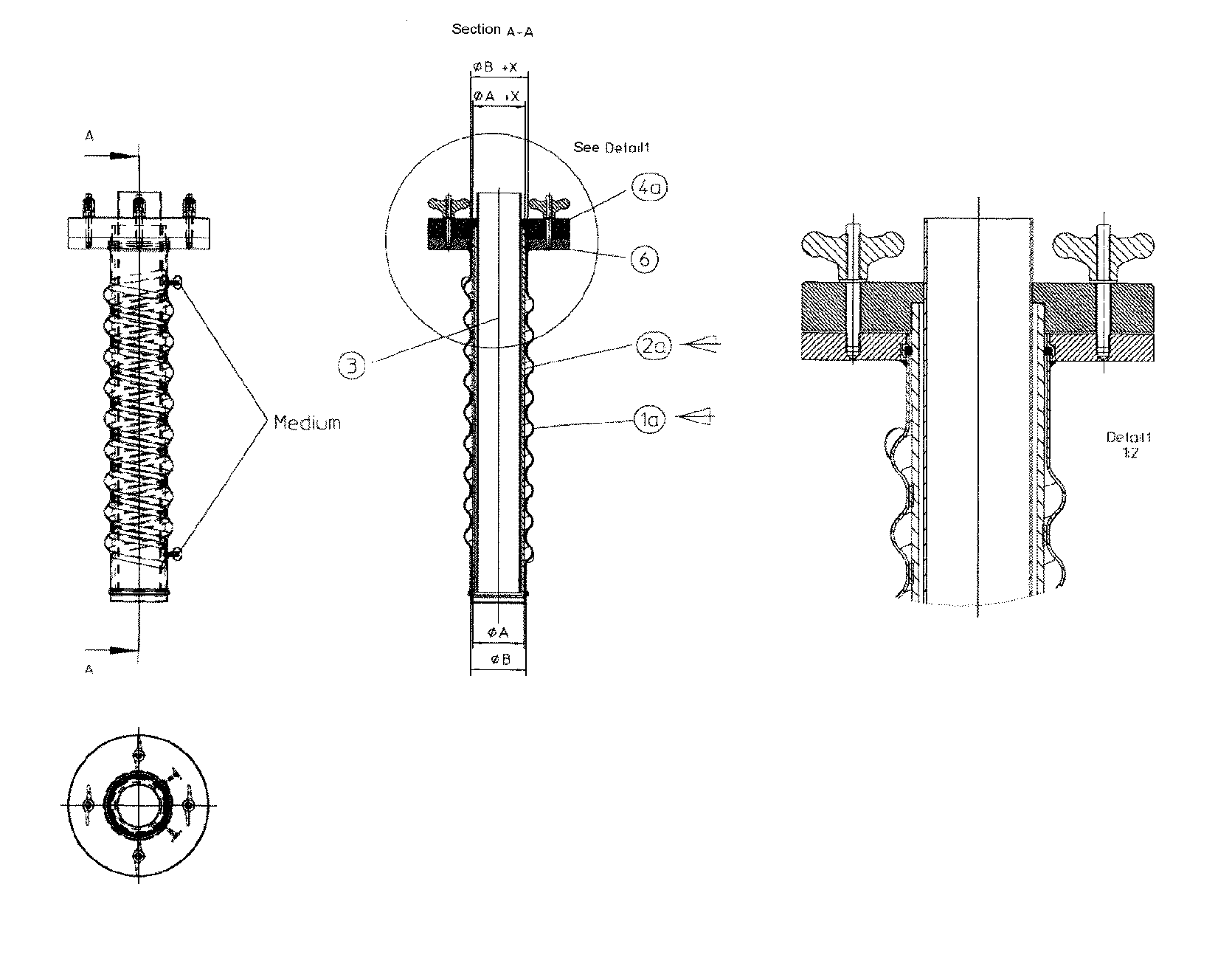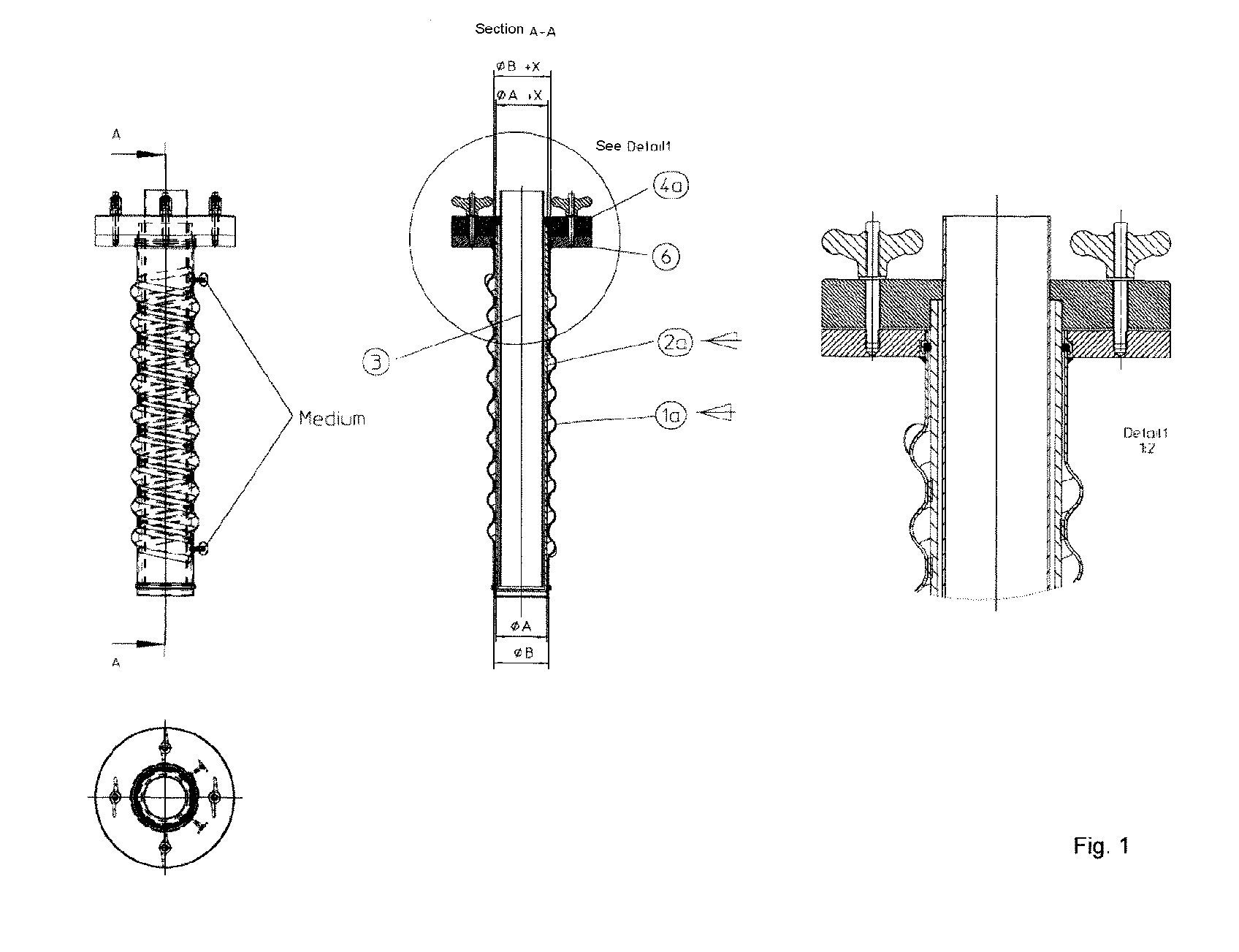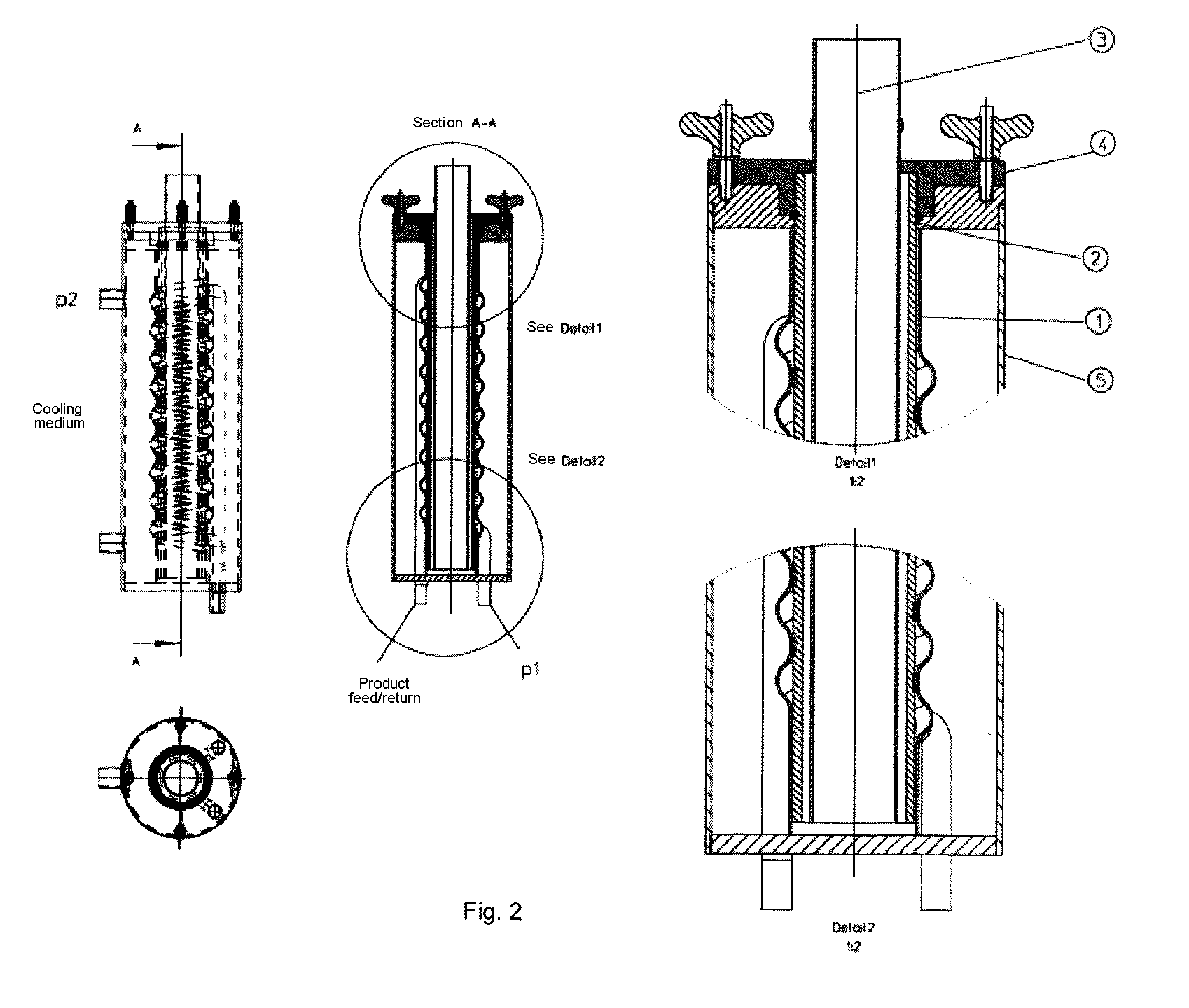Cleanable helical modules
a technology of helical modules and helical parts, applied in the field of cleanable helical modules, can solve the problems of affecting the safety of products, affecting the quality of products, so as to achieve the effect of simple separation of components, easy assembly, and easy re-assembling of helical parts
- Summary
- Abstract
- Description
- Claims
- Application Information
AI Technical Summary
Benefits of technology
Problems solved by technology
Method used
Image
Examples
example 1
Not According to the Invention
[0051]A solution was prepared from 0.5 l conventional milk with 1.5% fat content and E. coli phage of type MS2. The phage titer was more than 107 phages / ml. The solution was guided in circulation mode at a volume rate of 10 l / h through a helical module with 24 ml of reaction volume. The module was made of a quartz glass tube, over which a helical Teflon hose was pulled. In this manner, a helical channel through which the liquid can be guided forms between quartz glass tube and Teflon hose. In the quartz glass tube, a 9 W low-pressure mercury lamp was located which irradiated the solution through the quartz glass with 35 W / m2 at a wavelength of 254 nm.
[0052]After 30 min of irradiation, the test was stopped and a sample of the solution was mixed with E. coli host cells using a soft agar method and applied homogeneously on an agar plate. After one day, no plaques, i.e. no phage infectivity, could be found on the bacterial lawn. Accordingly, complete phage ...
example 2
According to the Invention
[0055]An identical test was now carried out using a helical module of the invention with a quartz glass tube and a plastic helix which is not transparent to radiation and can be disassembled. The biological result of the complete inactivation of the phages was identical to the first test. Comparable deposits on the quartz glass surface were also present. The module according to the invention was disassembled and the quartz glass tube was thus separated. The quartz glass surface could now successfully be cleaned mechanically, using a conventional household sponge and glass cleaning agent. No damage to the surface could be observed.
[0056]In a control test, under identical conditions, complete inactivation of the phages was once again achieved.
[0057]The cleaned module could thus be successfully reused.
PUM
 Login to View More
Login to View More Abstract
Description
Claims
Application Information
 Login to View More
Login to View More - R&D
- Intellectual Property
- Life Sciences
- Materials
- Tech Scout
- Unparalleled Data Quality
- Higher Quality Content
- 60% Fewer Hallucinations
Browse by: Latest US Patents, China's latest patents, Technical Efficacy Thesaurus, Application Domain, Technology Topic, Popular Technical Reports.
© 2025 PatSnap. All rights reserved.Legal|Privacy policy|Modern Slavery Act Transparency Statement|Sitemap|About US| Contact US: help@patsnap.com



